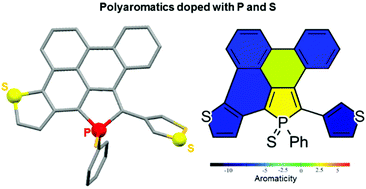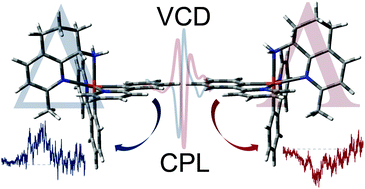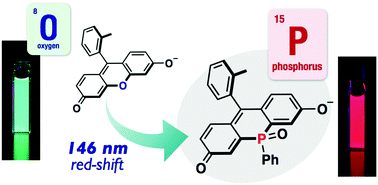05 Jan 22:47
Chem. Commun., 2016, 52,2133-2136
DOI: 10.1039/C5CC08972G, Communication
Krunoslav Uzarevic, Timothy C. Wang, Su-Young Moon, Athena M. Fidelli, Joseph T. Hupp, Omar K. Farha, Tomislav Friscic
Mechanochemistry and accelerated aging are new routes to zirconium metal-organic frameworks, yielding UiO-66 and catalytically active UiO-66-NH2 accessible on the gram scale through mild solid-state self-assembly, without strong acids, high temperatures or excess reactants.
The content of this RSS Feed (c) The Royal Society of Chemistry

31 Dec 18:52
Chem. Commun., 2016, 52,2118-2121
DOI: 10.1039/C5CC08439C, Communication
Yun-Pei Zhu, Yu-Ping Liu, Zhong-Yong Yuan
N,P-doped microporous carbon spheres based on the self-polymerization peculiarity of dopamine show enhanced electrocatalytic performance in ORR and HER.
The content of this RSS Feed (c) The Royal Society of Chemistry

23 Dec 16:46
Chem. Sci., 2015, Accepted Manuscript
DOI: 10.1039/C5SC04450B, Edge Article

Open Access
Rahul Banerjee, Bikash Garai, Arijit Mallick
Inkless and erasable printing is the key answer towards a sustainable paper industry. It's the solution for reducing paper wastages and the associated environmental hazards from the waste paper processing....
The content of this RSS Feed (c) The Royal Society of Chemistry

23 Dec 12:09
by Henrik Gotfredsen, Martyn Jevric, Søren L. Broman, Anne U. Petersen and Mogens Brøndsted Nielsen

The Journal of Organic Chemistry
DOI: 10.1021/acs.joc.5b02719

23 Dec 12:08
by Ryohei Kurata, Kazuyoshi Tanaka and Akihiro Ito

The Journal of Organic Chemistry
DOI: 10.1021/acs.joc.5b02425

23 Dec 04:57
by Fátima Aparicio, Sandeep Cherumukkil, Ayyappanpillai Ajayaghosh and Luis Sánchez

Langmuir
DOI: 10.1021/acs.langmuir.5b03771

23 Dec 04:53
by Zhaocun Shen, Yuqian Jiang, Tianyu Wang and Minghua Liu

Journal of the American Chemical Society
DOI: 10.1021/jacs.5b10496

22 Dec 10:59
Dalton Trans., 2016, 45,1546-1553
DOI: 10.1039/C5DT02905H, Paper
Assunta De Nisi, Christian Bergamini, Marco Leonzio, Giorgio Sartor, Romana Fato, Marina Naldi, Magda Monari, Natalia Calonghi, Marco Bandini
Alkynyl(triphenylphosphine)gold(I) complexes carrying variously substituted propargylic amines have been synthesized and fully characterized in solution and solid state.
The content of this RSS Feed (c) The Royal Society of Chemistry

19 Dec 11:13
Chem. Commun., 2016, 52,276-279
DOI: 10.1039/C5CC08336B, Communication
Jesse M. Teo, Campbell J. Coghlan, Jack D. Evans, Ehud Tsivion, Martin Head-Gordon, Christopher J. Sumby, Christian J. Doonan
Porous metal-organic polyhedra (MOPs), constructed from heterometallic PdII-MII (M = Cu, Ni, Zn) paddlewheel nodes and 5-tert-butyl-1,3-benzenedicarboxylate organic links, were prepared in which the PdII ions preferentially line the inner surface of the cage molecules.
The content of this RSS Feed (c) The Royal Society of Chemistry

16 Dec 20:59
by Bala N. S. Thota, Leonhard H. Urner and Rainer Haag

Chemical Reviews
DOI: 10.1021/acs.chemrev.5b00417

14 Dec 15:03
Dalton Trans., 2016, 45,2261-2272
DOI: 10.1039/C5DT04073F, Paper
Mohamed Shaker S. Adam, Markus K. Kindermann, Peter G. Jones, Joachim W. Heinicke
Novel bicyclic P,N-heterocyclic ligands and the first P- and P,N-coordinated LM(0)(CO)5, LRh(COD)Cl, (LPd(All)Cl)2PdCl2 and (LPdCl2)2 transition metal complexes thereof are presented.
The content of this RSS Feed (c) The Royal Society of Chemistry

13 Dec 20:11
by Daniel L. Crossley, Jessica Cid, Liam D. Curless, Michael L. Turner and Michael J. Ingleson

Organometallics
DOI: 10.1021/acs.organomet.5b00857

10 Dec 07:09
by Chuandong Dou, Xiaojing Long, Zicheng Ding, Zhiyuan Xie, Jun Liu, Lixiang Wang
09 Dec 19:50
by Xiu-Li Yang, Xiahui Chen, Gui-Hua Hou, Rong-Feng Guan, Rong Shao, Ming-Hua Xie
By incorporating an anthracene moiety into a framework, a multiresponsive luminescent metal–organic framework (1) has been synthesized, which exhibits both direct chemiluminescence (CL) and dual tunable photoluminescence. By utilizing the CL, 1 has been explored as a selective visual sensor for hydrogen peroxide. Moreover, 1 also exhibits tunable fluorescence response toward different analytes. For electron-rich aromatics, “turn-on” and “turn-off” responses can be simply switched by varying the excitation wavelength. For nitroaromatics, 1 exhibits novel linear quantitative quenching response. Density functional theory (DFT) calculations and experiments have been carried out to study the unique fluorescence response. The multiple luminescence properties and dual tunable sensing response indicate that incorporating anthracene moieties into frameworks should be a promising strategy to develop unprecedented luminescent materials with remarkable sensing properties.

A 3D metal-organic framework (MOF) consisting of an anthracene moiety is reported, which is the first example of a MOF exhibiting both direct chemiluminescence and dual tunable photoluminescence. The material is explored as a selective visual sensor for probing hydrogen peroxide, a dual sensor for aromatics, and a quantitative sensor for nitroaromatics.
09 Dec 09:21
Dalton Trans., 2016, 45,1896-1903
DOI: 10.1039/C5DT04154F, Paper

Open Access
W. Delaunay, R. Sz[double acute accent]cs, S. Pascal, A. Mocanu, P.-A. Bouit, L. Nyulaszi, M. Hissler
Synthesis and physical properties of polyaromatic hydrocarbons containing phosphole and thiophene rings at the edge.
The content of this RSS Feed (c) The Royal Society of Chemistry

09 Dec 09:20
Dalton Trans., 2016, 45,992-999
DOI: 10.1039/C5DT03642A, Paper
Giuseppe Mazzeo, Marco Fuse, Giovanna Longhi, Isabella Rimoldi, Edoardo Cesarotti, Alessandra Crispini, Sergio Abbate
Three chiroptical spectroscopic techniques are applied to an octahedral iridium complex. The vibrational exciton interpretation of VCD spectra is especially important.
The content of this RSS Feed (c) The Royal Society of Chemistry

08 Dec 15:30
Chem. Commun., 2015, Accepted Manuscript
DOI: 10.1039/C5CC08972G, Communication
Krunoslav Uzarevic, Timothy C Wang, Su-Young Moon, Athena M. Fidelli, J T Hupp, Omar K. Farha, Tomislav Friscic
We develop the first mechanochemical and solvent-free routes for zirconium metal-organic frameworks, making the frameworks UiO-66 and UiO-66-NH2 accessible on gram scale without strong acid, high temperature or excess reactants....
The content of this RSS Feed (c) The Royal Society of Chemistry

05 Dec 21:55
by Bernd Kohl, Mercedes V. Bohnwagner, Frank Rominger, Hubert Wadepohl, Andreas Dreuw, Michael Mastalerz
Abstract
The crystalline packing of a π-extended D3h-symmetric triptycene reveals a particular π stacking motif with an almost-eclipsed arrangement of adjacent π planes despite the steric repulsion of tert-butyl substituents. Four model compounds were analyzed by using single-crystal X-ray diffraction and theoretical calculations to study the influence of dispersion interactions of molecular parts and understand the relationship between the molecular structure and this unique packing motif.

Eclipse all else: The particular π stacking motif in the crystal packing of a π-extended D3h-symmetric triptycene, which reveals an almost-eclipsed arrangement of the tert-butyl substituents (see figure), was investigated by using single-crystal X-ray diffraction and theoretical calculations for four model compounds
05 Dec 21:55
by Steffen Bähring, Luis Martín-Gomis, Gunnar Olsen, Kent A. Nielsen, Dong Sub Kim, Troels Duedal, Ángela Sastre-Santos, Jan O. Jeppesen, Jonathan L. Sessler
Abstract
Supramolecular polymers are a class of macromolecules stabilized by weak non-covalent interactions. These self-assembled aggregates typically undergo stimuli-induced reversible assembly and disassembly. They thus hold great promise as so-called functional materials. In this work, we present the design, synthesis, and responsive behavior of a short supramolecular oligomeric system based on two hetero-complementary subunits. These “monomers” consist of a tetrathiafulvalene-functionalized calix[4]pyrrole (TTF-C[4]P) and a glycol diester-linked bis-2,5,7-trinitrodicyanomethylenefluorene-4-carboxylate (TNDCF), respectively. We show that when mixed in organic solvents, such as CHCl3, CH2ClCH2Cl, and methylcyclohexane, supramolecular aggregation takes place to produce short oligomers stabilized by hydrogen bonding and donor–acceptor charge-transfer (CT) interactions. The self-associated materials were characterized by 1H NMR and UV/Vis/NIR absorption spectroscopy, as well as by concentration- and temperature-dependent absorption spectroscopy and dynamic light scattering (DLS) analyses of both the monomeric and oligomerized species. The self-associated system produced from TTF-C[4]P and TNDCF exhibits a concentration-dependent aggregation behavior typical of supramolecular polymers. Further support for the proposed self-assembly came from theoretical calculations. The fluorescence emitting properties of TNDCF are quenched under conditions that promote the formation of supramolecular aggregates containing TTF-C[4]P and TNDCF. This quenching effect has been utilized as a probe for the detection of substrates in the form of anions (i.e., chloride) and nitroaromatic explosives (i.e., 1,3,5-trinitrobenzene). Specifically, the addition of these substrates to mixtures of TTF-C[4]P and TNDCF produced a fluorescence “turn-on” response.

Explosive fluorescence: The hetero-complementary monomeric subunits, tetrathiafulvalene–calix[4]pyrrole (TTF-C[4]P) and bis-2,5,7-trinitrodicyanomethylenefluorene-4-carboxylate (TNDCF), assemble to form oligomeric structures at higher concentrations. Dual-analyte-responsive behavior is seen, with de-aggregation of the supramolecular oligomers and a corresponding increase in the fluorescence intensity being seen in the presence of 1,3,5-trinitrobenzene (TNB) or Cl− anions.
05 Dec 21:52
by Simon C. C. Lucas, Jane E. Moore, Craig S. Donald and Janet L. Hawkins

The Journal of Organic Chemistry
DOI: 10.1021/acs.joc.5b01735

05 Dec 10:09
by Shi-Yuan Zhang, Dan Li, Dong Guo, Hui Zhang, Wei Shi, Peng Cheng, Lukasz Wojtas and Michael J. Zaworotko

Journal of the American Chemical Society
DOI: 10.1021/jacs.5b11150

05 Dec 10:08
by Luca Catalano, Salvador Pérez-Estrada, Giancarlo Terraneo, Tullio Pilati, Giuseppe Resnati, Pierangelo Metrangolo and Miguel A. Garcia-Garibay

Journal of the American Chemical Society
DOI: 10.1021/jacs.5b10776

01 Dec 07:11
Chem. Commun., 2016, 52,1120-1123
DOI: 10.1039/C5CC09345G, Communication
Aiko Fukazawa, Shinji Suda, Masayasu Taki, Eriko Yamaguchi, Marek Grzybowski, Yoshikatsu Sato, Tetsuya Higashiyama, Shigehiro Yamaguchi
Phospha-fluorescein, a phosphine oxide-containing fluorescein analogue, with pH-responsive red fluorescence as well as high photobleaching resistance, was synthesized.
The content of this RSS Feed (c) The Royal Society of Chemistry

29 Nov 08:28
Dalton Trans., 2016, 45,525-531
DOI: 10.1039/C5DT04068J, Paper

Open Access
Mikhail Kondrashov, David Provost, Ola F. Wendt
The choice of metallating agent completely reverses the regioselectivity in cyclometallation of 2-(1-naphthyl)-pyridine.
The content of this RSS Feed (c) The Royal Society of Chemistry

27 Nov 21:48
by Fumiya Miyamoto, Soichiro Nakatsuka, Keitaro Yamada, Ken-ichi Nakayama and Takuji Hatakeyama

Organic Letters
DOI: 10.1021/acs.orglett.5b03167

27 Nov 21:48
by Weiping Chen, Kui Tian, Xiaoxian Song, Zuolun Zhang, Kaiqi Ye, Gui Yu and Yue Wang

Organic Letters
DOI: 10.1021/acs.orglett.5b03155

24 Nov 20:03
Chem. Commun., 2016, 52,1048-1051
DOI: 10.1039/C5CC07238G, Communication
Elisabeth H. Menke, Vincent Lami, Yana Vaynzof, Michael Mastalerz
Three blade aroylenimidazoles as soluble electron acceptors for bulk heterojunction solar cells.
The content of this RSS Feed (c) The Royal Society of Chemistry

24 Nov 20:01
Dalton Trans., 2016, 45,6129-6135
DOI: 10.1039/C5DT03916A, Paper
Marc-Andre Courtemanche, Etienne Rochette, Marc-Andre Legare, Wenhua Bi, Frederic-Georges Fontaine
The FLP species bis(2-(TMP)phenyl)chloroborane was prepared as a monomeric Frustrated Lewis Pair displaying no B-N interaction. Species 1 reacts with H2 to generate reversibly the zwitterionic H2 activation product.
The content of this RSS Feed (c) The Royal Society of Chemistry

24 Nov 20:01
by Nerea Bilbao, Iris Destoop, Steven De Feyter, David González-Rodríguez
Abstract
We present an approach that makes use of DNA base pairing to produce hydrogen-bonded macrocycles whose supramolecular structure can be transferred from solution to a solid substrate. A hierarchical assembly process ultimately leads to two-dimensional nanostructured porous networks that are able to host size-complementary guests.

DNA base pairing is used to produce hydrogen-bonded macrocycles whose supramolecular structure can be transferred from solution to a solid substrate. A hierarchical assembly process ultimately leads to two-dimensional nanostructured porous networks that are able to host size-complementary guests.
23 Nov 22:53
by Michael Sekita, Ángel J. Jiménez, M. Luisa Marcos, Esmeralda Caballero, M. Salomé Rodríguez-Morgade, Dirk M. Guldi, Tomás Torres
Abstract
Zinc phthalocyanines (ZnPc) have been attached to the peri-position of a perylenemonoimide (PMI) and a perylenemonoanhydride (PMA), affording electron donor–acceptor conjugates 1 and 2, respectively. In addition, a perylene-monoimide-monoanhydride (PMIMA) has been connected to a ZnPc through its imido position to yield the ZnPc-PMIMA conjugate 10. The three conjugates have been studied for photoinduced electron transfer. For ZnPc-PMIMA 10, electron transfer occurs upon both ZnPc and PMIMA excitation, giving rise to a long-lived (340 ps) charge-separated state. For ZnPc-PMI 1 and ZnPc-PMA 2, stabilization of the radical ion pair states by using polar media is necessary. In THF, photoexcitation of either ZnPc or PMI/PMA produces charge-separated states with lifetimes of 375 and 163 ps, respectively.

Long-lived charge separation: Perylenemonoimides (PMI), perylenemonoanhydrides (PMA), and perylene-monoimide-monoanhydrides (PMIMA) are studied as the oxidizing counterpart of phthalocyanines in electron donor–acceptor hybrids. The three systems show different degrees of orbital partitioning and generate long-lived charge-separation states upon photoexcitation.
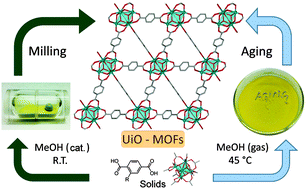
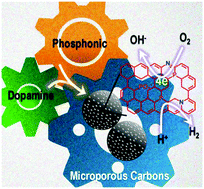
 Open Access
Open Access







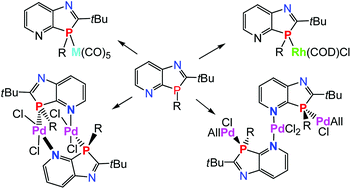

![[LEFTWARDS ARROW]](http://onlinelibrarystatic.wiley.com/undisplayable_characters/002190.gif) N bridged bipyridyl (BNBP) is a novel electron-deficient building block for polymer electron acceptors in all-polymer solar cells. The B
N bridged bipyridyl (BNBP) is a novel electron-deficient building block for polymer electron acceptors in all-polymer solar cells. The B

